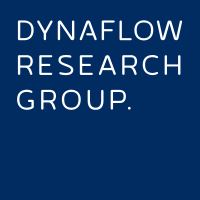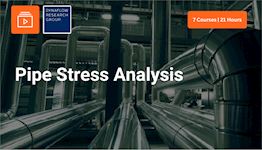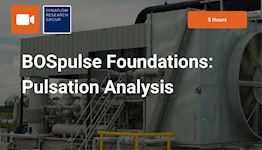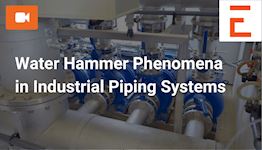Understanding Water Hammer Part I
Why take this course?
This self-paced course develops essential engineering judgment on Water Hammer in industrial piping systems, focusing on real-life applications beyond theory. Topics include valve closure effects, wave speed, pump trips, and key equations like Joukowsky and Michaud. The course features video lectures, quizzes, and awards a certificate with PDH credits upon completion.
What you'll learn
After these courses, you...
• have a solid understanding of water hammer phenomena,
• have seen real-life cases of water hammer phenomena in industrial piping,
• understand how system parameters (fluid, diameters, lengths) influence water hammer,
• have the skills the identify and evaluate critical surge sensitive locations
• are capable of assessing pressure surge reports and situations to take actions for mitigation of their system at hand.
About the course
This course helps you develop your essential engineering judgment about Water Hammer phenomena in industrial piping systems. The focus of the course goes beyond explaining the underlying theory of Water Hammer to show how the characteristics of Water Hammer are determined based on real-life situations.
Topics include the Principles of Water Hammer, Instant Valve Closing, Unbalanced Loads, and the application of the Joukowsky and Michaud Equations. The course also covers Non-instantaneous Flow Variations, Wave Speed in Pipes, and the effects of different Valve Types and Closure Curves. Practical cases based on real-life situations including Water Hammer in Jetty Lines, Pump Curves, and system responses to equipment like pump trips, will be explored to provide a thorough understanding of the complex dynamics of Water Hammer.
Meet your instructor
Who should attend this course
• Those involved with performing pressure surge analysis and system evaluation.• Engineers that need to be able to understand reporting of pressure surge analysis for their system at hand.
Prerequisites
A basic understanding of piping systems is beneficial.Program & Details
-
Welcome
1. Welcome & Your instructor
2. Content overview
3. How to use this course -
Module 1 - Simple Valve Closure Downstream of a Tank
1. Principles of Water Hammer,
2. Example 1a: Instant Valve Closing
3. Unbalanced Loads
4. Joukowsky Equation
5. Example 1b: Joukowsky Equation -
Module 2 - Valve Closure in a Jetty Line
1. Module Overview
2. Wave Speed in Pipes
3. Valve Types and Closure Curves
4. Example 1: Valve Types
5. Cavitation
6. Example 2: Cavitation
7. Example 3: Water Hammer in Jetty Line
8. Outro -
Module 3 - Pump Trips and Switchover in a Process Plant
1. The pump trip scenario
2. Results upstream and downstream of the pump (amongst others: pressure fluctuations, flow, unbalanced loads)
3. The influence of pump moment of inertia and initial steady state flow
4. Pump curves
5. Cavitation downstream of the pump
6. System (pump) start-up scenarios
7. Good practices & pump properties -
Final Notes & Certificate
1. Congratulations
2. Course evaluation survey
3. Your Personal Certificate
4. Rate this course
5. Related courses
Certification
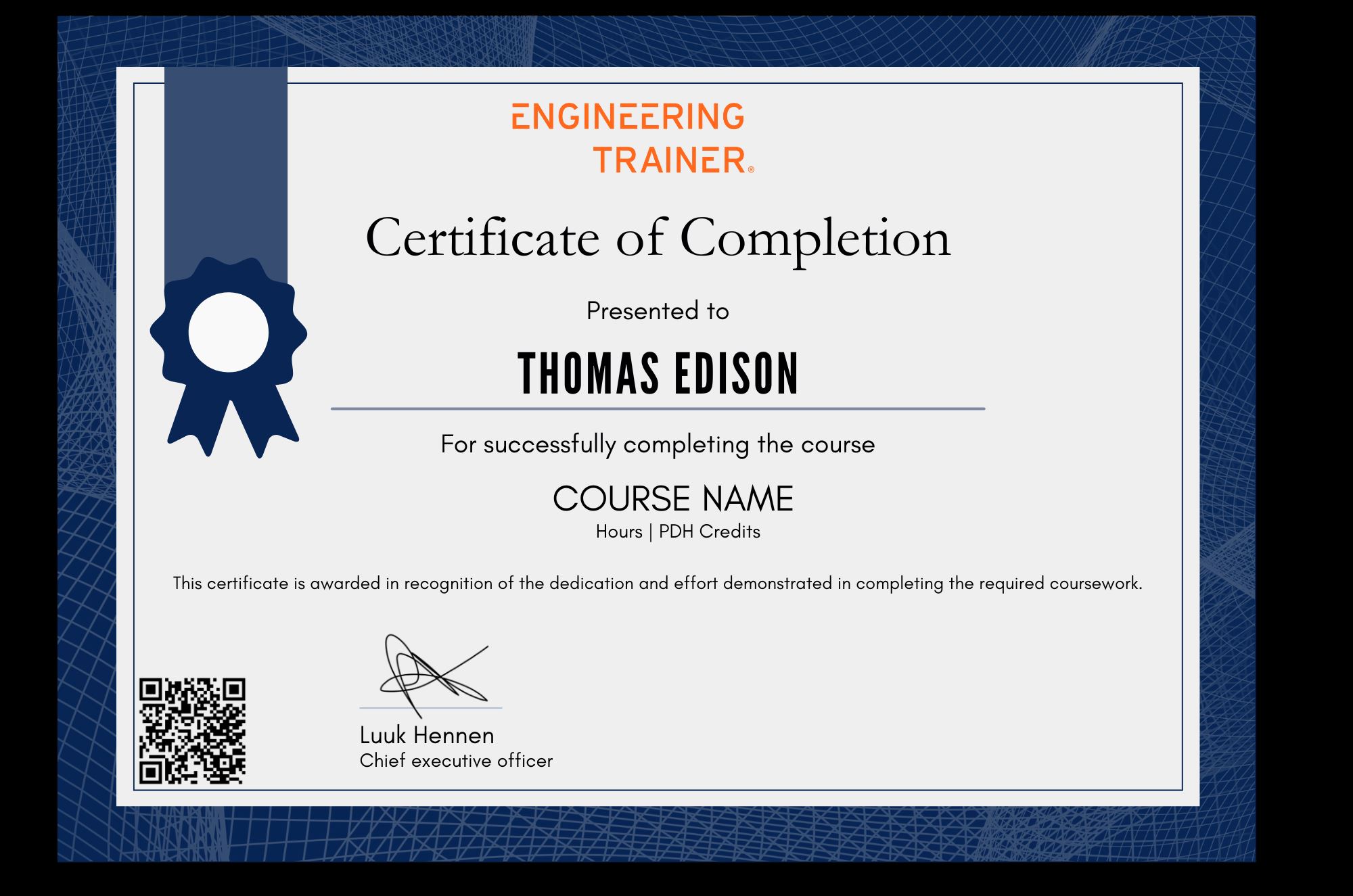

Why choose EngineeringTrainer
-
Unlimited Team-wide Access
-
Advance Technical Competences
-
Courses by Industry Authorities
Since using EngineeringTrainer our internal mentorship has a much more matured character.
Logan Chapman - COO at Chapman Consulting Inc.



